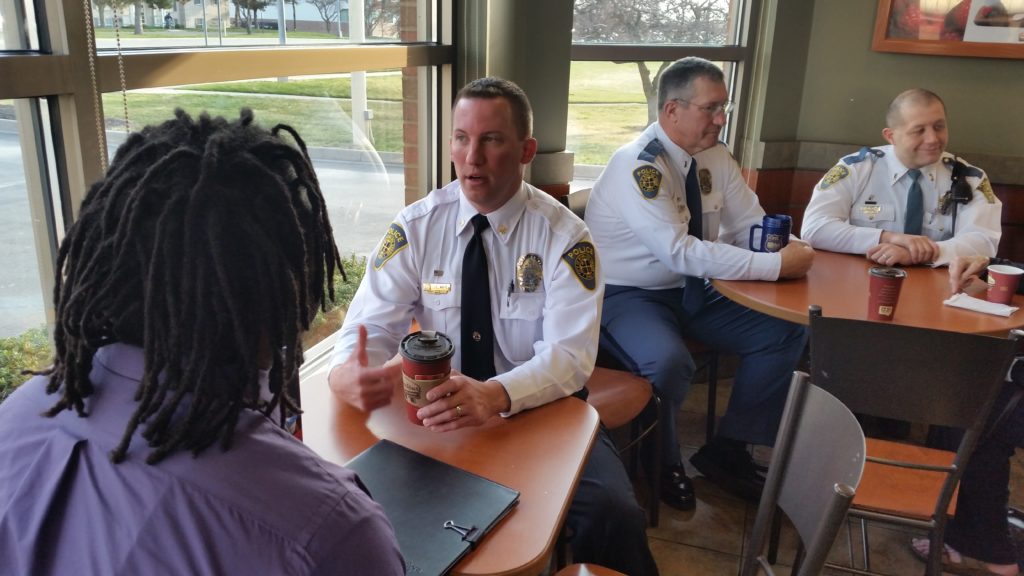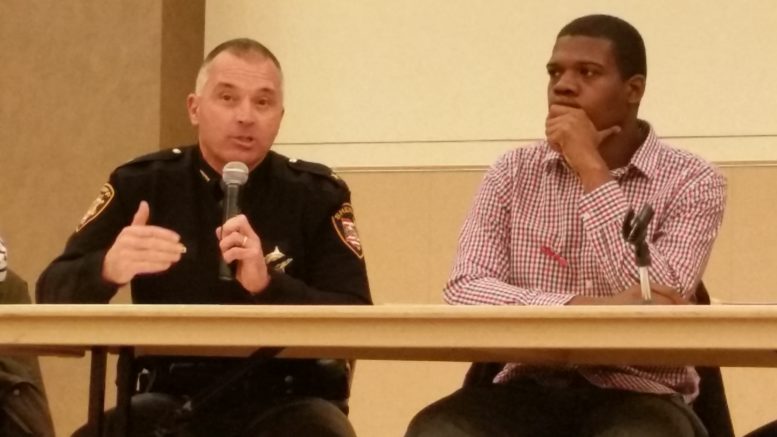By JAN LARSON McLAUGHLIN
BG Independent News
The video images of George Floyd’s last moments pleading as a Minneapolis police officer pinned his knee on Floyd’s neck have detonated divisions across the nation.
Law enforcement officials in Bowling Green and Wood County know people are asking – could this happen here.
“I cringed,” Wood County Sheriff Mark Wasylyshyn said when he saw the video of the officer’s restraint on Floyd. “I felt disappointment, frustration, anger.”
“It gives all of us a black eye in law enforcement,” the sheriff said this morning.
Both Wasylyshyn and Bowling Green Police Lt. Dan Mancuso said their officers are trained and tested to not use excessive force. They are also trained to intervene if a fellow officer is using unnecessary force.
“You’re only allowed to use as much force as needed to subdue someone,” the sheriff said. “We do hold ourselves accountable. We do police ourselves.”
Wasylyshyn said deputies are taught more than physical techniques.
“They treat people with respect. That’s been ingrained,” he said.
The racial component in Floyd’s death is likely to be discussed next week during the monthly meeting of the Bowling Green Human Relations Commission, and by Not In Our Town Bowling Green. Both groups include members of the city police division.

Bowling Green officers are trained when it is legal to use force, and what levels are acceptable, Mancuso said.
“We’re trying to minimize the need of force needed,” he said.
Both departments teach officers how to de-escalate situations – though it appears from the various videos of Floyd that he was complying with officers.
One way Bowling Green officers are trained to de-escalate a scene is by other officers getting involved once a suspect is in custody. For example, if someone resists being taken into custody, once another officer arrives on the scene, the secondary officer takes control of the arrested person, Mancuso said.
When a supervisor arrives on the scene, that officer takes control – separating the suspect from the arresting officers.
Wasylyshyn said the sheriff’s office has a policy requiring deputies to confront a fellow officer if excessive force is being used.
“It’s a requirement to step in if someone is using too much force,” the sheriff said. “That’s very much ingrained in us.”
Wasylyshyn said the Minneapolis officers on the scene should have intervened as Floyd kept saying he couldn’t breathe.
“They are guilty of not stepping in to save Mr. Floyd,” he said.
Bowling Green police are also trained to not stand by if a fellow officer is using excessive force, Mancuso said.
“We would expect them to intervene and take control,” he said. “We’re not going to allow our officers to stand by. They are just as culpable” if they don’t intervene.
Complaints about Wood County Sheriff’s Department deputies using excessive force are “extremely rare,” Wasylyshyn said. In recent years, when the sheriff has said he would investigate by reviewing officer body cameras and dashcam video, the complaints have been withdrawn, he said.
Bowling Green Police Division receives few complaints about excessive force, and conducts thorough investigations to determine if the force was justified, Mancuso said.
On a regular basis, the police division records any time force used. Those incidents go through multiple layers of review, all the way to the chief.
Reviews from agencies outside the Bowling Green Police Division have found the officers have a very low rate of using their firearms, tasers of batons. A review of the division from 2013 through 2015 showed officers never used their firearms or their batons.
The review called that “pretty surprising … given the climate the police operate in.”
In that three-year period, BG police made 8,000 arrests, and used force in 71 of those. Not a single lawsuit related to use of force was filed against the department.
Mancuso said equipping officers with tasers resulted in fewer injuries to the public and to officers.
“We’ve seen a significant decrease in use of force injuries,” he said.
Bowling Green police officers have dashcams but are not equipped with body cameras due in part to the expense, Mancuso said.
Incidents like Floyd’s death in Minneapolis have a ripple effect in law enforcement, Mancuso said.
“They do make our job harder. It brings out a lot of emotion in people,” Mancuso said. “I’m sure we’ll deal with some of the after effects from it, because there’s some real fear.”
“We are concerned about public perception,” Mancuso said.
Wasylyshyn agreed.
“There are tremendous decisions that have to be made in a split second” by law enforcement, he said. “It’s very challenging. All it takes is that 1% to do something heinous.”




